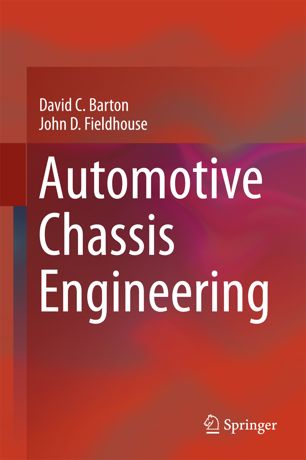

Most ebook files are in PDF format, so you can easily read them using various software such as Foxit Reader or directly on the Google Chrome browser.
Some ebook files are released by publishers in other formats such as .awz, .mobi, .epub, .fb2, etc. You may need to install specific software to read these formats on mobile/PC, such as Calibre.
Please read the tutorial at this link: https://ebookbell.com/faq
We offer FREE conversion to the popular formats you request; however, this may take some time. Therefore, right after payment, please email us, and we will try to provide the service as quickly as possible.
For some exceptional file formats or broken links (if any), please refrain from opening any disputes. Instead, email us first, and we will try to assist within a maximum of 6 hours.
EbookBell Team

4.4
82 reviewsWritten for students and practicing engineers working in automotive engineering, this book provides a fundamental yet comprehensive understanding of chassis systems and requires little prior knowledge on the part of the reader. It presents the material in a practical and realistic manner, using reverse engineering as a basis for examples to reinforce understanding of the topics. The specifications and characteristics of vehicles currently on the market are used to exemplify the theory’s application, and care is taken to connect the various topics covered, so as to clearly demonstrate their interrelationships.
The book opens with a chapter on basic vehicle mechanics, which include the forces acting on a vehicle in motion, assuming a rigid body. It then proceeds to a chapter on steering systems, which provides readers with a firm understanding of the principles and forces involved under static and dynamic loading. The next chapter focuses on vehicle dynamics by considering suspension systems—tyres, linkages, springs, dampers etc. The chapter on chassis structures and materials includes analysis tools (typically, finite element analysis) and design features that are used to reduce mass and increase occupant safety in modern vehicles. The final chapter on Noise, Vibration and Harshness (NVH) includes a basic overview of acoustic and vibration theory and makes use of extensive research investigations and practical experience as a means of addressing NVH issues. In all subject areas the authors take into account the latest trends, anticipating the move towards electric vehicles, on-board diagnostic monitoring, active systems and performance optimisation. The book features a number of worked examples and case studies based on recent research projects. All students, including those on Master’s level degree courses in Automotive Engineering, and professionals in industry who want to gain a better understanding of vehicle chassis engineering, will benefit from this book.